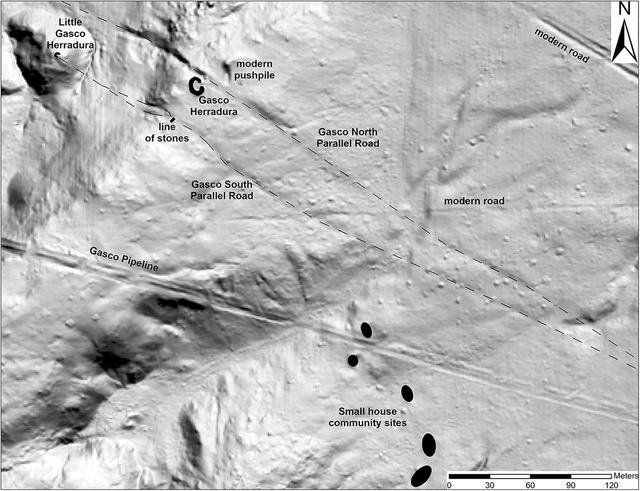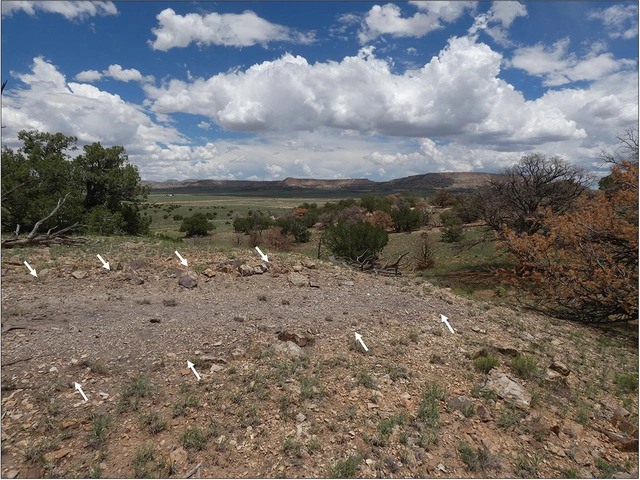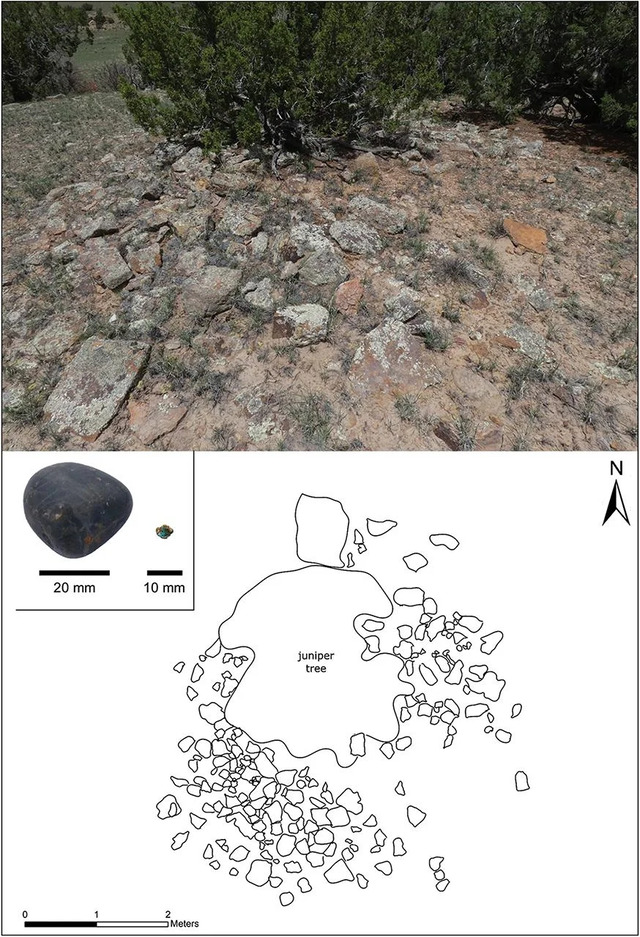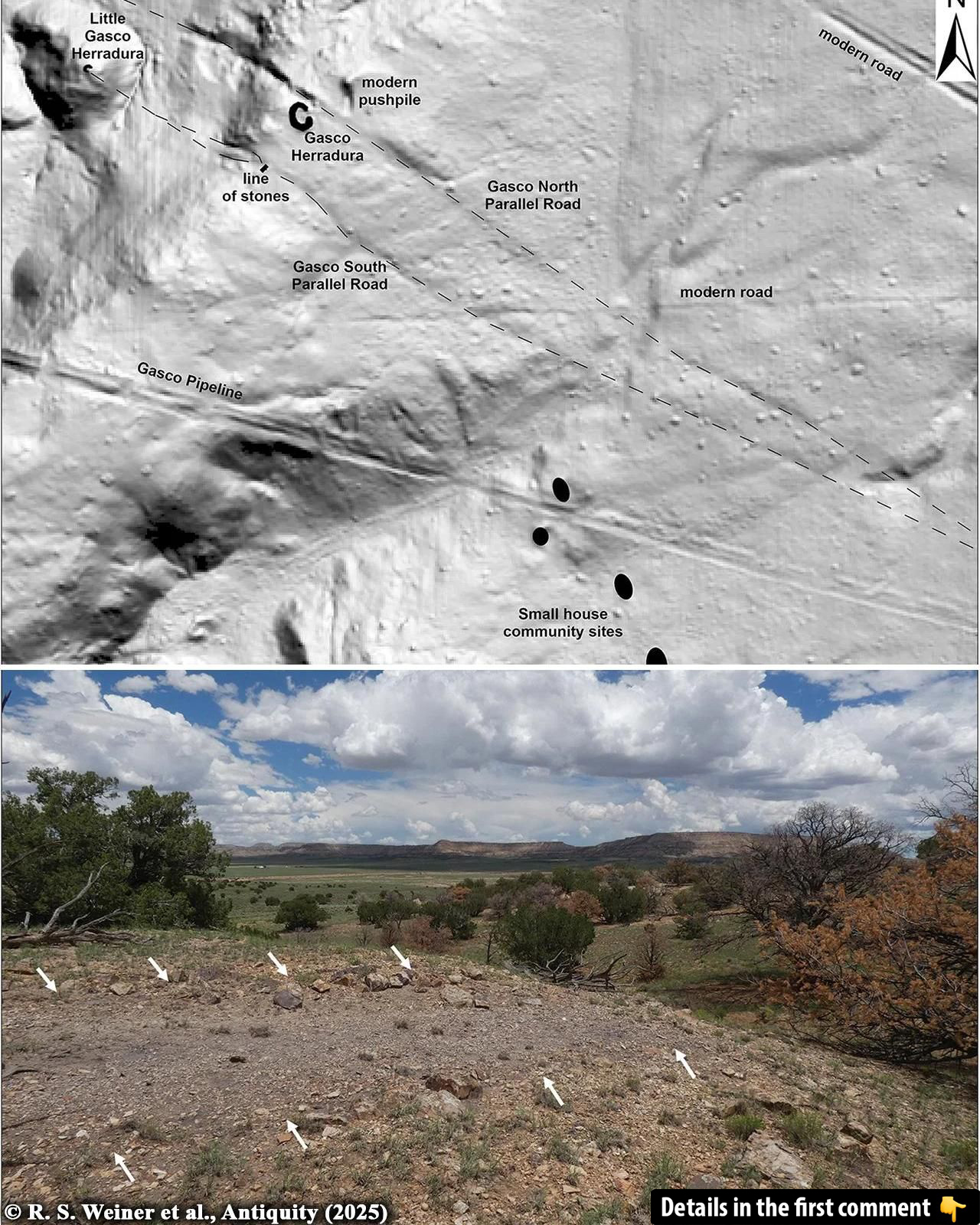In the heart of New Mexico, near the iconic Chaco Canyon, archaeologists have uncovered a remarkable discovery that reshapes our understanding of the ancient Chacoan civilization. Using advanced lidar technology, a team from Dartmouth College has revealed a 1,000-year-old sacred road system, aligned with the winter solstice sunrise. These roads, stretching across nearly four miles, were not built for everyday travel, but for ceremonial purposes, connecting the people with the cosmos. This groundbreaking find sheds new light on the spiritual and cosmological beliefs of the Chacoan people, offering a glimpse into their intricate relationship with the natural world.
The Role of Lidar Technology in Archaeology
Lidar technology has revolutionized archaeological exploration by offering a non-invasive way to “see” beneath the dense foliage and rocky surfaces that typically obscure ancient features. This method uses laser light to create detailed, high-resolution maps of landscapes, allowing archaeologists to uncover hidden roads, buildings, and structures with extraordinary precision. In the case of the Chacoan roads, lidar was instrumental in uncovering the Gasco site, where researchers discovered two parallel roads running across the landscape.

Previously, experts believed that these roads were designed primarily for transportation between settlements, but the lidar maps revealed a much more complex and cosmologically charged purpose. Instead of being functional pathways for daily life, these roads were likely ceremonial routes connecting the people with the cosmos, designed to align with key celestial events.
Video
Watch the video as lasers uncover a 1,000-year-old Indigenous road near Chaco Canyon, aligned with the winter solstice!
Exploring the Gasco Site and Its Roads

At the Gasco site, located approximately 50 miles south of Chaco Canyon, archaeologists uncovered two previously unknown roads that stretched over a distance of nearly four miles. The most remarkable aspect of these roads is their precise alignment with the sunrise over Mount Taylor during the winter solstice. Mount Taylor, still sacred to Indigenous communities, was an important spiritual focal point for the Chacoans.
The discovery of these roads adds another layer of depth to the understanding of the Chacoan civilization, which flourished between 850 and 1250 CE. Chaco Canyon, known for its grand ceremonial centers and pueblos, has long been a source of fascination for archaeologists and historians. However, these new roads, with their alignment to celestial events, provide new evidence of the Chacoans’ complex cosmological beliefs. Rather than being simple transportation routes, these roads appear to have played an essential role in the people’s spiritual practices, possibly used during rituals or processions that aligned with specific times of the year.
The Spiritual and Ceremonial Role of the Roads

The new research suggests that the roads at Gasco were not built for practical purposes, like linking settlements or facilitating trade, but instead were designed to serve as pathways for sacred rituals. These roads may have been used in ceremonies that involved processions, offerings, and other spiritual practices. The idea that these roads had a ceremonial purpose is supported by the discovery of “herraduras,” horseshoe-shaped rock structures that were likely shrines for ritual offerings.
In addition to their alignment with the winter solstice sunrise, the roads’ wide paths and monumental construction point to their importance in the spiritual life of the Chacoans. At 30 feet wide, these roads were far larger than necessary for a society that did not rely on wheeled vehicles or pack animals. This scale, along with the presence of stone mounds, ramps, and staircases, strongly indicates that the roads were not designed for ordinary use but for monumental, ceremonial purposes.
Herraduras: Roadside Shrines and Rituals
Along the sacred roads, archaeologists discovered the remains of herraduras—horseshoe-shaped rock structures—alongside other possible ritual artifacts like ceramics and shaped stones. These features likely served as focal points for religious ceremonies and offerings. The positioning of the roads in relation to these shrines further suggests that the Chacoans incorporated seasonal and celestial events into their religious observances. The discovery of these structures deepens our understanding of the role these roads played in connecting the community to the sacred forces they believed governed the universe.
One road may have been used during the winter solstice, while the other may have been used in the summer, reinforcing a dualistic principle often found in the Chacoan worldview. The alignment of these roads with the sun’s position at different times of the year highlights the Chacoans’ deep connection to the natural world and their desire to harmonize with celestial rhythms.
The Dualistic Cosmology of the Chacoan People

The idea of dualism—two complementary but opposing forces—is a central theme in many Indigenous cultures, and it appears to have been a key aspect of Chacoan cosmology. The two parallel roads discovered at Gasco represent this duality, as they align with the winter and summer solstices. This dualistic principle can also be seen in other aspects of Chacoan culture, such as the architecture of their ceremonial centers, which often featured twin structures and mirrored designs.
In this way, the Chacoan roads were not simply utilitarian paths but were part of a larger spiritual and cosmological framework. The roads were integral to the Chacoans’ understanding of time, space, and their relationship with the natural world. By aligning their roads with the solstices and other celestial events, the Chacoans demonstrated a profound respect for the forces of nature and an understanding of the cycles that governed life.
Cultural and Archaeological Significance
The discovery of these sacred roads is not only significant for its archaeological value but also for its cultural importance. The Chacoan civilization, despite its decline due to environmental challenges and prolonged droughts, continues to influence modern Indigenous groups in the American Southwest. The Hopi, Zuni, and Diné (Navajo) people are all descendants of the Chacoans and still maintain strong cultural and spiritual ties to the region.
These discoveries also underscore the deep spiritual connection that ancient peoples had with their environment. By constructing monumental roads that aligned with celestial events, the Chacoans integrated their beliefs into the very landscape, creating pathways that were not only for physical travel but for spiritual journeying as well.
Impacts of Modern Development on Chacoan Sites
Unfortunately, many Chacoan sites, including the newly discovered roads, are now under threat from modern development, including energy projects on public lands. These projects, which include drilling and construction, risk damaging or even destroying these important archaeological sites. Experts have warned that the preservation of Chaco Canyon and its surrounding areas is crucial not only for understanding the past but also for respecting the living cultural traditions of modern Indigenous peoples.
In response to these threats, archaeologists and Indigenous groups have called for greater protection of these sacred sites. By raising awareness of their significance, they hope to ensure that the Chacoan legacy is preserved for future generations.
Conclusion: A Monumental Discovery
The discovery of the sacred roads near Chaco Canyon represents a breakthrough in our understanding of the Chacoan civilization and its spiritual practices. Using lidar technology, researchers have uncovered a new layer of Chacoan history that demonstrates how the people of this ancient culture integrated their cosmological beliefs into their everyday lives and landscapes.
The roads, aligned with the winter solstice and linked to celestial events, are monumental constructions that served as pathways not just for travel, but for spiritual journeys that connected the Chacoans with the cosmos. This discovery highlights the complex relationship between ancient peoples and the natural world, offering new insights into a culture that continues to influence the Southwest today.
As we continue to study these remarkable findings, it becomes clear that the Chacoan civilization was not just a society of great architectural achievements, but a deeply spiritual culture that viewed the landscape itself as sacred. This discovery challenges conventional notions of what roads were and how they were used, forcing us to reconsider the meaning of ancient pathways and their role in connecting people to the cosmos. The Chacoan roads are not just relics of the past—they are a testament to the enduring spiritual and cultural legacy of the Indigenous peoples of the American Southwest.
Video
Watch the video Chaco Canyon: Indigenous Astronomy in the American Southwest to explore the fascinating connection between the site and ancient celestial knowledge!



